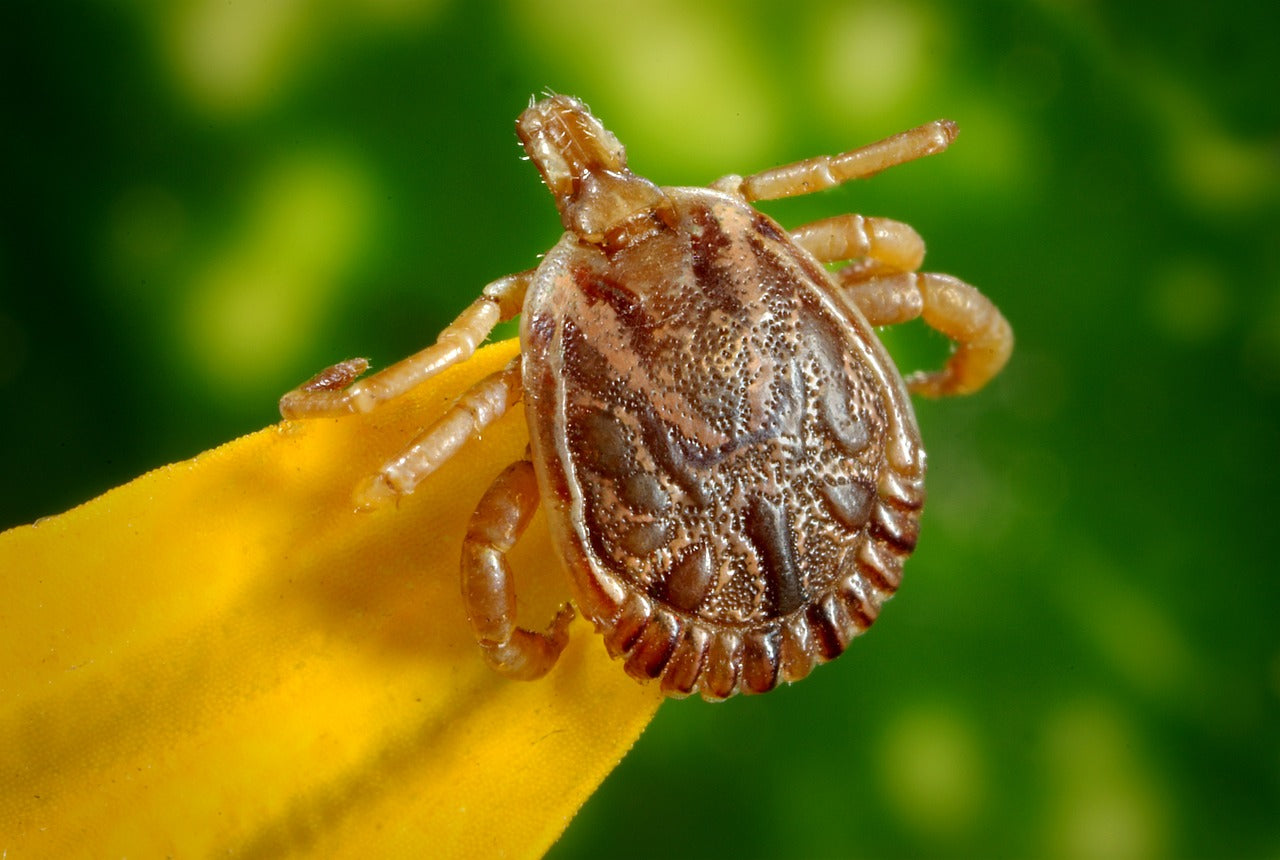There’s a right way and a wrong way to safely remove a tick.
Ticks. Eww.
My face can't help but to scrunch up in disgust when I think about them. And, truth be told, while I was writing this I literally felt like I had them crawling all over me and I could barely sit still. (Typing is rather challenging when you're frantically itching ghost bugs.)
For real though, ticks carry some pretty terrible diseases that can make your dog extremely sick and the illnesses vary depending on where you live and the types of ticks that live there too. Spit and vomit. Disgusting, right? Well that's how ticks end up transmitting diseases to whatever living being they're attached to. (And, the outsides of their bodies can carry pathogens too.) Gross! That leads us into the important stuff.
Tick born disease can be fatal if left untreated.
While there are a range of diseases carried by ticks, possible symptoms your dog might display include:
- Paralysis
- Difficulty breathing
- Seizures
- Fever
- Anemia
- Vomiting
- Diarrhea
- Depression
- Lethargy
- Loss of appetite
- Painful and inflamed joints
- Swollen lymph nodes
- Flu like symptoms
- Death
Your best defense against them is prevention. The good news is that typically, ticks don't transmit those diseases the second they latch on to your dog. However, if a tick does happen to get past any measures of protection, you've got between 24 and 36 hours to remove them before you need to start keeping an eye out for symptoms.

A good rule of thumb is to thoroughly check your dog every day if you spend any time in or near the woods or areas where ticks might hang out.
Ticks can be difficult to spot on dogs with thick coats and long hair. Check the typical favorite tick hangouts; armpits, groin, ears and hind end, but don't overlook everywhere else if you don't find any there. Ticks can latch on anywhere. Spend a good 10 minutes checking your pup over. The good news is that he or she will appreciate all the extra love and attention.
How NOT to remove a tick from your dog (or cat)
1. Don't try to pull the tick off with your fingers!
One, you're exposing yourself to whatever pathogens this little blood sucker is carrying and two, you'll likely squeeze them enough that they end up vomiting straight into your dog's blood stream, delivering a potential disease tidal wave.
2. Nail polish & Vaseline. Just don't.
Long ago..in a galaxy far far away...someone started a rumor that you could smother a tick (while it's still attached to a dog or cat) by covering it with nail polish, vaseline, or any other chemical known to kill ticks. While the smothering part might be true, this will likely cause the tick to "lose its lunch" and again expose your dog to the very things you're trying to avoid. This method leaves you with a dog sporting nail polish on its fur or a greasy vaseline spot, and you still have to get the tick off. It's 2018. We can do better.

3. Cigarettes & Hot Matches. Never.
Smoking is bad, mmmkay. And, don't go near your dog with either of these things! At all! Ever. And, when it comes to the tick, yep, you guessed it. Both of these options will just make him (or her) puke. I think we've established that that's bad news.
4. Don't be a Jerk-er. Or, a Twister
Yeah...the jerking and twisting method just causes more of the problems we've talked about in all the "Don'ts" above. You're likely going to squeeze the crap, er..guts, out of the tick and not to mention...you're touching it with your bare hands. And, you're also more likely to rip it's body off of its embedded head, leaving it inside your dog. Eww.
That last bit does bring up an important note. Even when you remove a tick as correctly as possible, sometimes they just lose their minds. Ha! Get it? Lose their minds..like, their head comes off... never mind. Anyway, don't panic if this happens. Your dog's body will expel it in a few days the same way ours would expel a splinter. It's all good. Your pup won't have a tick head bobbing around their blood stream...like a bug without a paddle. Oy..I'm even rolling my own eyes at myself now.
Ehemm...
Alright. You might be wondering "well, what's the right way to remove a tick?"
I'm so glad you asked!
The Proper Way to Remove a Tick
Tools You need for the job:
- Either a Tick Key or a pair of needle nose tweezers
- Rubbing alcohol
- A cotton ball
- A toilet (for the tick. not you)
- An empty pill bottle (Keep reading. It will make sense)

If you're using the tweezers, you've got to get as close to your dog's skin as possible so that you pinch the tick at the head or neck as opposed to their body. (Remember, we don't want to squeeze the tick.) Once you've got that part handled, pull straight up. Not to the left. Not to the right, backwards, or forward. PULL STRAIGHT UP.
If you're using a Tick Key, simply slide the large opening of the key over the body of the tick and gently drag the key along the top of your dog's fur. This will pull the entire tick right out!
Now for the toilet. Send the tick on a bon voyage cruise straight to the sewer islands. Flush it.*
*Heads up: Cancel the Cruise if...
If the tick has been on your dog for more than 24-36 hours and you're concerned about the likelihood of it having transmitted any pathogens to your pup, don't flush it down the toilet. You'll want to have your veterinarian run some blood tests on your dog to rule out any disease. Put the tick in a small container and pour rubbing alcohol over it, so you can safely bring it with you to your vet's office. This makes it much easier to identify the type of tick and narrow down the possible diseases it might have been carrying .
Use the cotton ball and rubbing alcohol to clean the bite area on your dog as well as your hands. You can also use anti-bacterial soap and water or iodine if you prefer to not use the alcohol.
All bad jokes aside, ticks are a serious health concern for your dogs (and cats) and nothing to take lightly. Research is revealing that ticks are becoming increasingly resistant to chemical methods of prevention such as flea and tick collars, pills, and topicals. Not to mention, these pharmaceutical interventions have some serious long term and scary side effects on our beloved pets.
Ultimately, it's your call as a pet parent when it comes to choosing how you protect your dogs and cats from fleas and ticks. I encourage you, however, to consider some healthier, holistic and equally as effective alternatives.
Certain essential oils and organic and naturally occurring resources such as food-grade diatomaceous earth ( NOT the kind for your pool), neem powder, and dry yarrow thoroughly mixed in equal parts, creates a safe, non-toxic flea, tick, mosquito and fly repellent! Use an empty spice bottle to put the powder in and apply to your pup once a month. A teaspoon should be plenty for a medium sized dog so adjust accordingly for the littles and the bigs. This is a dusty powder so be sure to protect your dogs face to prevent him or her (and you) from breathing it in. It's non-toxic however, the diatomaceous earth can irritate the soft linings of the nose and throat due to its microscopic sharp edges.
As always, a healthy pup is a happy pup that's ready for all the adventures! Have any other natural remedies for ticks, fleas, and mosquitos? Let me know in the comments!
High fives and good vibes,
Stace and Charlie

